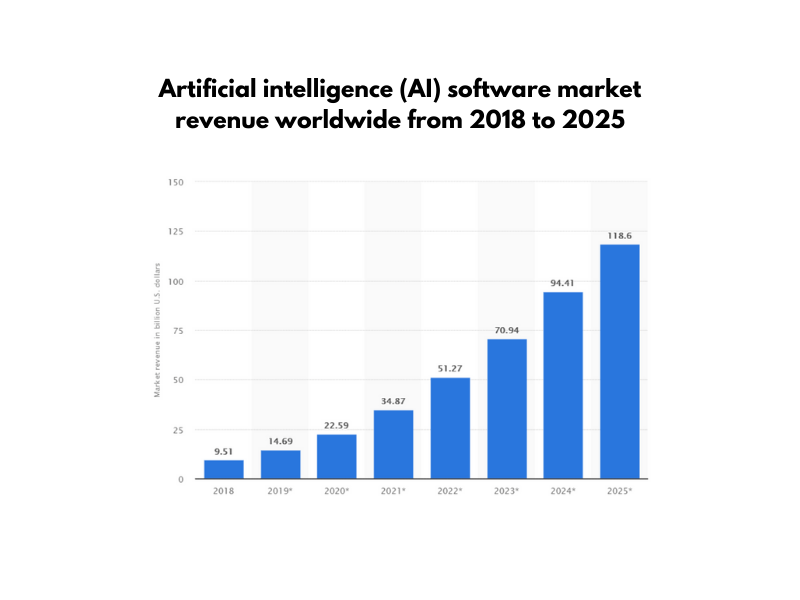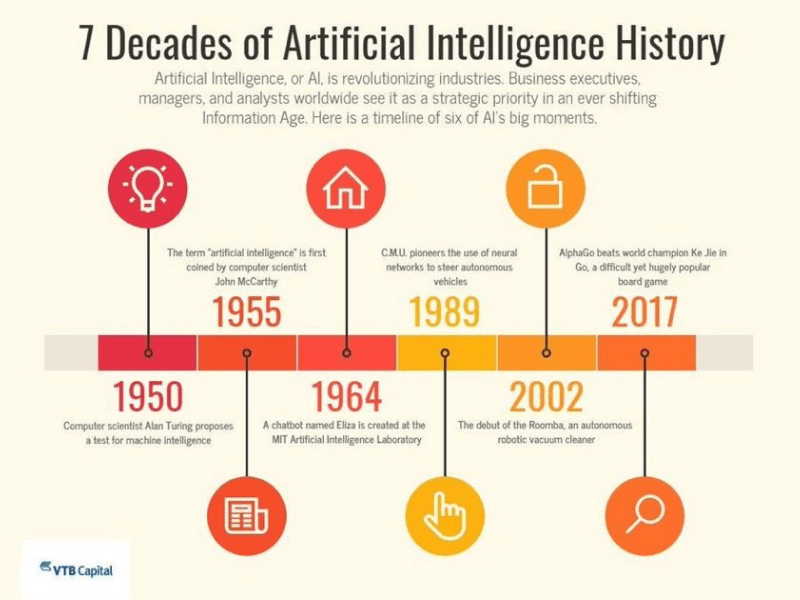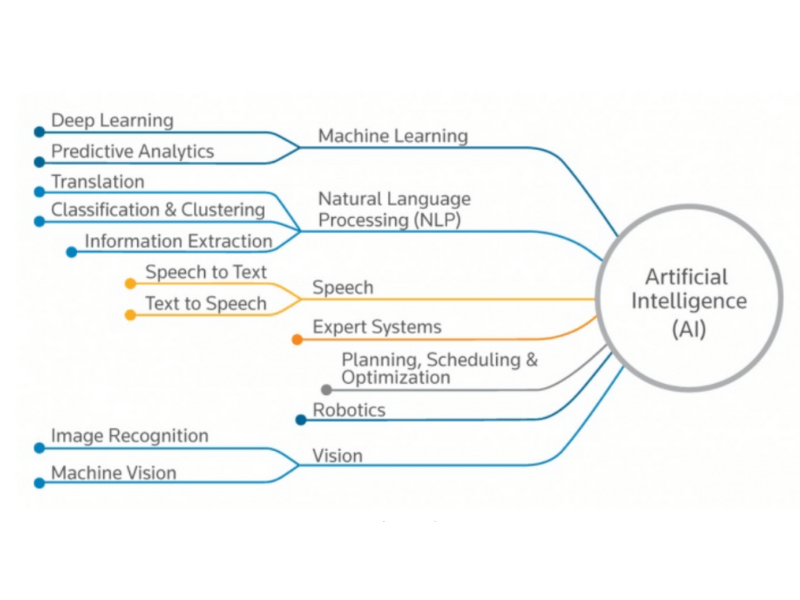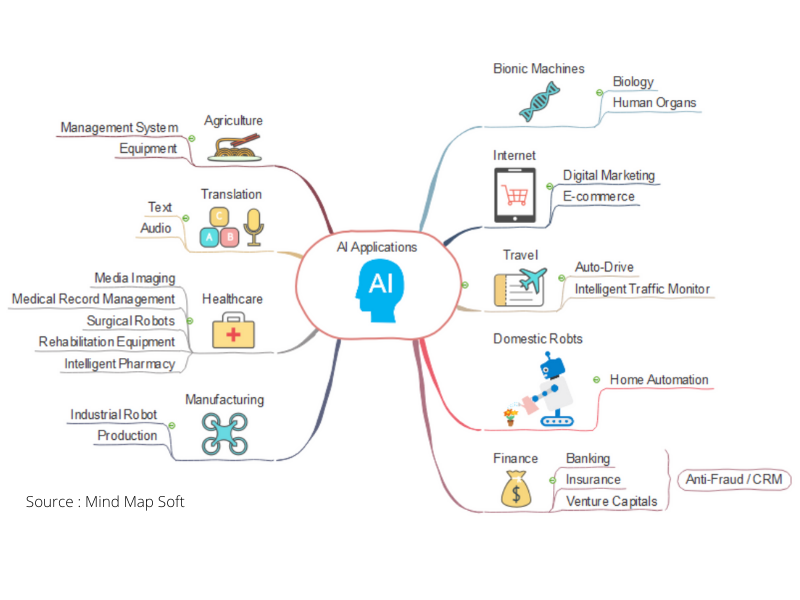This article is about Artificial Intelligence
A Starter-Guide to Build Your AI-Knowledge from Scratch
By NIIT Editorial
Published on 24/10/2020
8 minutes
There is no stopping AI, and no, we don’t mean it the way the Terminator franchise puts it, the Judgement Day. On the contrary, what’s dawning on industries from top to bottom is the fact that Artificial Intelligence will add tremendous potential to businesses and stretch profit margins beyond what was previously thought conceivable. In 2020, the AI software marketplace is expected to reach US$22.59 billion in sales. That said, many people are still not clear with
- What is Artificial Intelligence?
- Why Does AI matter?
- History of Artificial Intelligence
- Types of Artificial Intelligence
- What is Artificial Intelligence used for?
So for those of you who’re new to Artificial Intelligence guide for beginners will answer, hopefully, all such queries so the next time AI is discussed, you have an idea of it.
What is Artificial Intelligence?
Intelligence that is displayed by an “artificial” entity is called artificial intelligence. Simple. Since it is not something that comes naturally to that “entity”, and because the “intelligence” was imparted unnaturally, that is why the term “artificial”. The entity refers to any machine. The central idea of AI technology is to make machines capable of thinking without human intervention and perform cognitive tasks such as learning and problem-solving. To keep science striving for maturity, scientists agree, that whatever it is that the machines can’t do, be described as Artificial Intelligence.

What is the History of Artificial Intelligence?
Artificial Intelligence was formalized in 1955 as a scientific discipline and like any other technology has had its share of ups and downs on the hype cycle. Those associated with the field since its inceptions have been witness to AI winters, a term used to refer to the drying out of enthusiasm in the field. Part of that drought in investment and interest in AI was due to over-promising and under-delivering on the part of the then developers. This happened in two eras, particularly during the 1970s and 80s. But starting in 1990, interest in AI renewed and with parallel computational advances in processing power and machine learning. Today, we are at a stage when AI is deeply embedded in each industry and unavoidable to come across in daily-use applications.
AI works best with vast volumes and quality of data. Machine Learning that is one of the streams of AI, makes it possible for algorithms to learn through algorithms that can backpropagate and modify their understanding with changing sets of data. Therefore, as far as Artificial Intelligence is concerned, the more volume and refined data you have, the better results AI will generate for the business.
This is one of the reasons, American tech giants like Alphabet (Google), Amazon, and Facebook and Chinese companies like Alibaba and Tencent, have leveraged their data stores to monetize AI digital products.
The founding fathers of AI and the generations of researchers after them wanted to enable AI to reach the same level of human intelligence. This guiding principle is rooted in the thought that human intelligence and intellect is something mechanical, measurable, and replicable that can be absorbed and integrated into a machine. Artificial General Intelligence (AGI) is the ultimate goal of AI development, a stage when AI could become fully conscious.

Types of Artificial Intelligence
AI for beginners could be an overwhelming field to grasp. You’d find it easier to classify and comprehend the topic based on the following 7 categories:
Artificial Intelligence Based on Capabilities
We can narrow down AI into 3 categories basis their ability.
Artificial Narrow Intelligence (ANI)
Also called weak AI by some, it is trained to do perform either a series of limited or a standalone repetitive task. Push it outside of this and the program would face complications. It is the most commonplace AI architecture that is found in commercial applications. Apple’s voice assistant, Siri, and IBM’s Watson are examples of narrow AI. It is being experimented with heavily in related fields like natural language processing, driverless cars, and automated product recommendation algorithms.
Artificial General Intelligence (AGI)
Also referred to as Strong AI, it is this kind that is expected to match humans in intellectual thought. Unlike narrow AI, it is expected to have sufficient independence of thought that it would need no human assistance to operate. Given a situation, AGI will have the capability to truly understand human behaviour and act in a way that is indistinguishable from humans. Researchers are struggling to make AI self-conscious so it looks upon a course of action considering the human backdrop. Although this area of field research will take a good many years before seeing the light of the day, when it does, the invention would be one to change the course of the human future.
Artificial Super Intelligence (ASI)
If AGI was about matching human thought and calibre, ASI will be to exceed all of it. It is assumed, that Artificial Superintelligence will be better than humans at everything be it decision making, problem-solving, empathy, and even relationships. Put simply, it would be a higher-being. The notion of such a self-aware, ultra-intelligent creature invokes dystopian theories of human enslavement to machines. Although not baseless, such theories, as per scientists, overlook the business potentiality that ASI would bring to the table.
Artificial Intelligence Based on Functionality
There are 4 types of AI based on functionality.
Relative Machines
This model laid the foundation for new-age AI systems. The programming architecture for relative machines comprises mainly of conditional if-else statements. Being the beginning phase of AI, relative machines are reactive than being proactive due to which, their capabilities are highly restrictive in hindsight. It does not learn from experiences which, among other things, differentiates modern-day AI from relative machines. Google’s AlphaGo is an example of relative machines.
Limited Memory
Consider this a step ahead of relative machines. Whereas the latter is reactive at best, limited memory AI can learn from stored data in its memory and predict outcomes with better accuracy.
Self-Aware
This is apparently the future of AI. It is the kind of AI that is reflected in Hollywood flicks taking over the world. Think of it as a human with the processing power of a computer. A Self-aware AI will be capable of harnessing emotions of its own and combining a humane factor with its mechanics gifts. If conservative projections are to be believed, then it would be some decades before a self-aware AI walks the face of Earth.
Theory of Mind
There are blurred lines between the definition of this category and self-aware AI. The Theory of Mind predicts that an AI would surface in the future that understands, interacts, behaves, and “lives” like humans.

Tech Used to Build Artificial Intelligence Systems
There is a barrage of terms to familiarize yourself with,
Natural Language Processing
It is a technique used to make computer programs to understand human language. Natural Language processing systems can decipher text from written text. Speech recognition and speech synthesis are applications of NLP. Businesses use this technique in installing Interactive Voice Response, as an example. They use NLP and Natural Language Understanding for decision making and problem-solving. NLP inspires the voice recognition capabilities of flagship assistants like Siri, Google, and Alexa. It uses methodologies such as keyword spotting, and lexical affinity to understand the hidden sentiment respond with accurate information.
Natural Language Generation (NLG)
Natural Language Generation is heavily deployed in AI to convert data into human-readable text. It acts as a bridge that takes any form of structured data and makes it comprehensible for humans. Organizations use it to present data in custom reports.
Machine Learning
Machine Learning is the algorithmic technique to learn from patterns and make predictions without human intervention. The more data there is the better the analyses and higher the chances of projections coming true. Unsupervised learning by computer programs increases automation, saving crucial business hours, increasing the prospect of AI in engineering, and ultimately becoming a self-perpetuating cycle.
Robotic Process Automation (RPA)
Robotics and Artificial Intelligence go hand in hand. It is the technique of teaching computers to interpret data inputs and respond the same way humans would, to mechanize, and automate a repetitive process. Multiple machines and software are integrated into the web, broadcast messages, and communicate with one another to cohesively automate tasks at scale. Numerous examples of RPAs include automated payment processing systems, automatic order placement on e-commerce stores, and chatbots. An Artificial Intelligence-powered robot can be hands-on in multiple industries from healthcare to hospitality.
Deep Learning Platforms
It is used to find patterns in large sets of data for which it uses artificial neural networks (ANN). Deep learning is considered to be a sub-set of machine learning thanks to its heavy application in pattern recognition. Predominantly, it is inspired by the way the brain works, channeling information through ANNs, and habituating the algorithms to newer patterns, as and when they emerge.

Applications of Artificial Intelligence
Below we list the top uses of Artificial Intelligence.
Customer Service
Most if not all customer service interactions are conducted by humans. Since the discovery of automation, it is such a capability of answering the same question that researchers have been out to robotize. Interactive voice response systems are a result of that push, so are chatbots that mitigate human intervention and provide responses to common queries. Such use cases of AI in digital marketing will continue to grow as AI-talent becomes easier to hire and the technology more accessible.
Data Mining
Machine learning, which is a sub-set and crucial contributor towards AI, is applied towards data mining. It is the process of sifting through big data to find patterns and insights to improve overall business performance. This particular sector acts as the hotbed for a mainstream programming language Python and Artificial Intelligence, to fuse together.
Automation
Industrial automation is one area where efficiency optimization could result in savings worth billions of dollars. Not to mention the saved time adds to workplace productivity.
Education
AI is already being implemented at a considerable scale in the education sector. Technologies like Augmented and Virtual Reality are integrating AI-specialities and aid trainers in real-time to gauge student understanding. Basis this, classroom exercises can be tailored to the level of understanding of each individual enabling better grades.
Healthcare
Once modelled, AI-aided machines can be useful in operation theatres mitigating the chances of human error with their precision. Likewise, algorithms can be trained to diagnose early-stage life-endangering ailments such as cancer. A key takeaway from this follows that Artificial Intelligence and the future are intertwined in majorly all industries.
So you’ve learned what AI is, its types and applications, but do you have the answer to the question, how to learn Artificial Intelligence?

Begin Your AI-journey at NIIT
Big things have small beginnings, you can begin to learn Artificial Intelligence right here, at NIIT. With NIIT’s career programs, we give you the start you need for your baby steps towards learning Artificial Intelligence Engineering, on a strong footing.
Advanced PGP in Data Science and Machine Learning (Full Time)
Become an industry-ready StackRoute Certified Data Science professional through immersive learning of Data Analysis and Visualization, ML models, Forecasting & Predicting Models, NLP, Deep Learning and more with this Job-Assured Program with a minimum CTC of ₹5LPA*.
Job Assured Program*
Practitioner Designed


 Sign In
Sign In
































































































































































































































































































































































































Reviewed on 12th July 2025